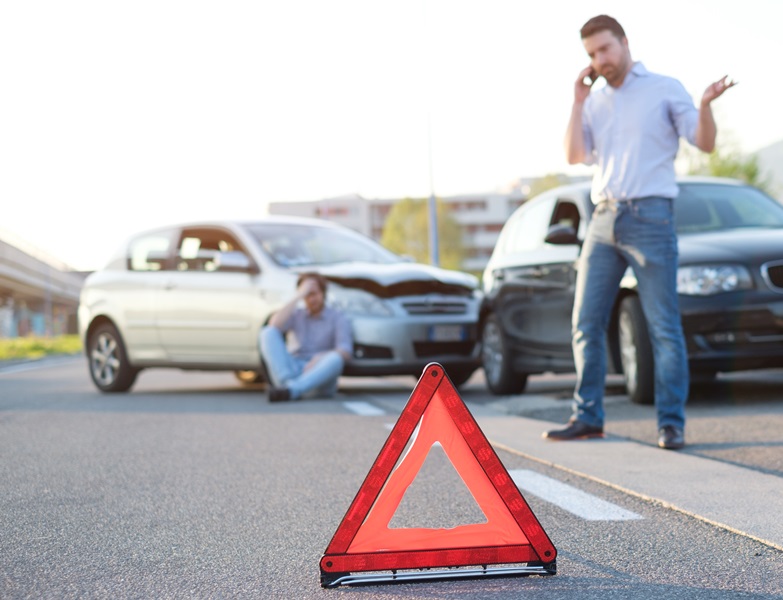Imagine driving on the highway with your kids strapped in the backseat, and suddenly a car cuts into your lane without their turn signals on. You step on the brakes and make sure everyone’s okay, but you grip the wheel a little tighter until the next traffic stop. You look to your left and see that you’re next to the vehicle that just cut you off.
What do you do next?
Faced with a similar situation, 50% of Americans admit to expressing their anger through some form of aggression. They’d honk their horn, flash their headlights, shout, or even drive aggressively to convey their frustration. As traffic congestion and road conditions worsen, there’s more than enough going on to put drivers in a bad mood. Failure to control feelings of anger and aggression can lead to one of the leading causes of death on US roads—road rage.

What is Road Rage?
Road rage pertains to any angry or violent behavior exhibited by people while driving. Everyone gets somewhat heated on the road, but some people can end up taking it a little too far—often at the expense of other people or property.
It’s an extreme form of aggressive driving, which can turn fatal in a split second.
Below are some examples of actions that qualify as road rage.
- Tailgating another vehicle to get them to speed up
- Flipping off or making rude gestures at another driver
- Deliberately cutting off another vehicle
- Excessive horn honking to express annoyance
- Bumping another vehicle on purpose
- Shouting obscenities at another motorist
- Threatening or intimidating other drivers
- Engaging in confrontation or physical assault

What Causes Road Rage?
There are many things that can cause road rage in either yourself or other drivers. Sometimes, it can be triggered by the smallest of infractions—like the driver in front of you at the stoplight taking just two seconds too long to start moving after the light changes to green. It all depends on your limits and your state of mind at the time of driving.
Nonetheless, here are some of the most common causes of road rage:
- Extreme stress
- Horrible traffic/standstill
- Road obstructions (car accidents, road constructions, etc)
- Driving too slow
- Cutting people off
- Not signaling before turning or changing lanes
- OR leaving your turn signal on
- Erratic driving
- Obnoxious behavior (playing loud music, honking too much, etc)
- Using high beams
A Nation of Angry Drivers: Road Rage Statistics
Road rage incidents are more common than you think. Unfortunately, most of these cases are left unreported. In a poll conducted by the American Automobile Association’s Foundation for Traffic Safety, about 80% of drivers admitted to expressing serious aggression on the road at least once a year. Even the nicest person you know can lose it behind the wheel and turn a 2,000 lb. vehicle into a weapon.
The consequences of acting on negative emotions while driving a vehicle can be devastating. The number of fatal car crashes linked to aggressive driving has spiked by 500% in the span of a decade, bringing the number of reported incidents from 80 in 2004 to 467 in 2015.
Experts estimate that 2 out of 3 of all road rage incidents involve at least one firearm, endangering not only other drivers but any pedestrians in the area as well.
It’s perfectly normal to feel anger behind the wheel. However, we must learn to control our emotions and prevent them from clouding our judgment.
How to Prevent Road Rage
We all contribute to each other’s experiences on the road. While we can’t control the feelings of other drivers, we can take steps to manage our own tempers.
Here are some ways you can prevent road rage:
- Plan ahead and leave on time.
When you’re in a hurry to get somewhere, it’s easy to get upset and lash out at other drivers even when they’re not breaking the law. Planning your trip ahead and following a schedule will help you feel in control and less overwhelmed behind the wheel.
- Don’t use your phone.
One of the things that easily tick off motorists is when they see someone texting or fiddling with their phones while driving. Put your phone in hands-free mode before driving and don’t text and drive.

- Turn your high beams off.
Only use your vehicle’s high beams when absolutely necessary. Switch to low beams in high-traffic areas to prevent blinding oncoming drivers and causing annoyance.
- Check your blind spots before switching lanes.
Use your blinkers and be mindful of your surroundings when switching lanes. Not only is switching lanes without using blinkers a pretty rude thing to do, but it can also lead to serious accidents.
- Avoid driving if you’re feeling overwhelmed with emotion.
We all have bad days—some worse than others. If you’re feeling extremely mad or upset, you may be better off calling a ride-sharing service or having someone else drive you.
How to Deal with Road Rage
At some point, we will all encounter an aggressive driver on the road—regardless of whether or not their anger towards us is warranted. With this in mind, knowing how to react to road rage (coming from other drivers) becomes just as important as knowing how to control your own.
Here are some techniques you can employ to avoid becoming part of the growing statistics of road rage shootings and accidents:
- Stay calm.
Reacting based on fear can escalate the situation. It is best to avoid making eye contact and ignore your aggressor. Let it go and keep your cool.
- Take a deep breath and relax.
Clear your head and think twice before acting out. Remember that giving in to your anger can cost you so much more than just your driver’s license. You can lose your job, go to jail, or even lose your life or your family. If needed, pull over at a safe location to blow off steam.
- Drive as if someone is in the car with you.
You are less likely to act out on your anger if you have kids or your parents in the car. Considering the consequences of your actions as if you had passengers in the vehicle will help you avoid making rash decisions and hopefully keep your feelings under control.
- Avoid confrontation.
Don’t honk or shout back. If they cut you off, let them have the right of way. It is in your best interest to avoid all kinds of confrontation. Being rude and acting out will only further provoke road rage drivers and give them even more reason to direct their anger at you .
- Get a dashboard camera.
Having a dash cam can help you gather evidence in case another driver claims you did something wrong on the road. You can also record abusive motorists on cameras that swivel.

- Gather information.
Take note of the make and model of your aggressor’s vehicle and memorize their license plate number so you can report them to law enforcement in case things get out of hand.
- Don’t get out of your car.
Stay inside your vehicle and lock your doors. If an angry driver is following your vehicle, don’t lead them to your home. Doing so can make you or your family an easy target for other forms of violence. Instead, drive to a public place with lots of possible witnesses or to local law enforcement.
- Get on or off the freeway.
This will derail the aggressive driver from reaching their destination and may cause them to back off.
Any information provided on this Website is for informational purposes only and is not intended to replace consultation with a professional mechanic. The accuracy and timeliness of the information may change from the time of publication.



















